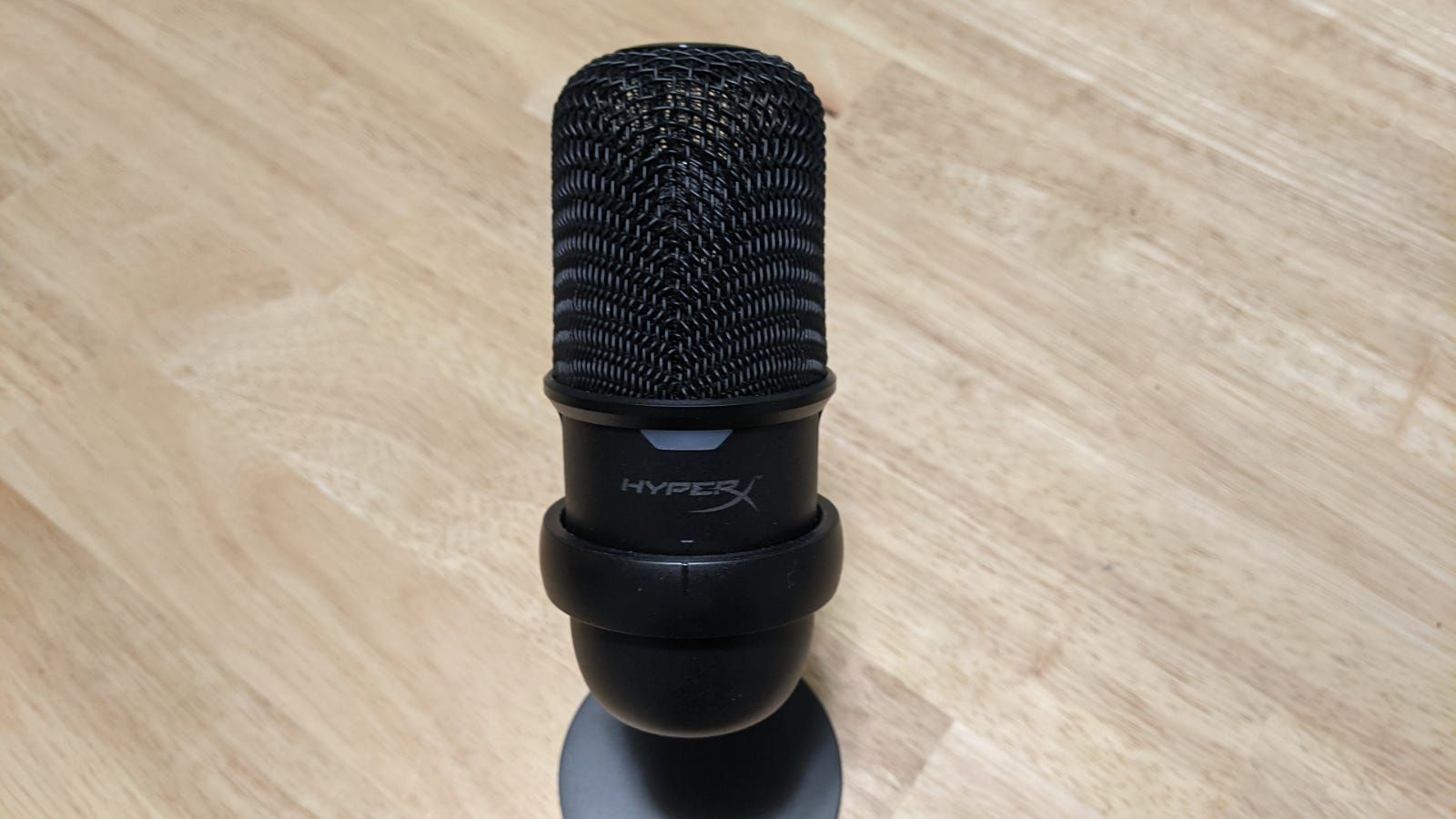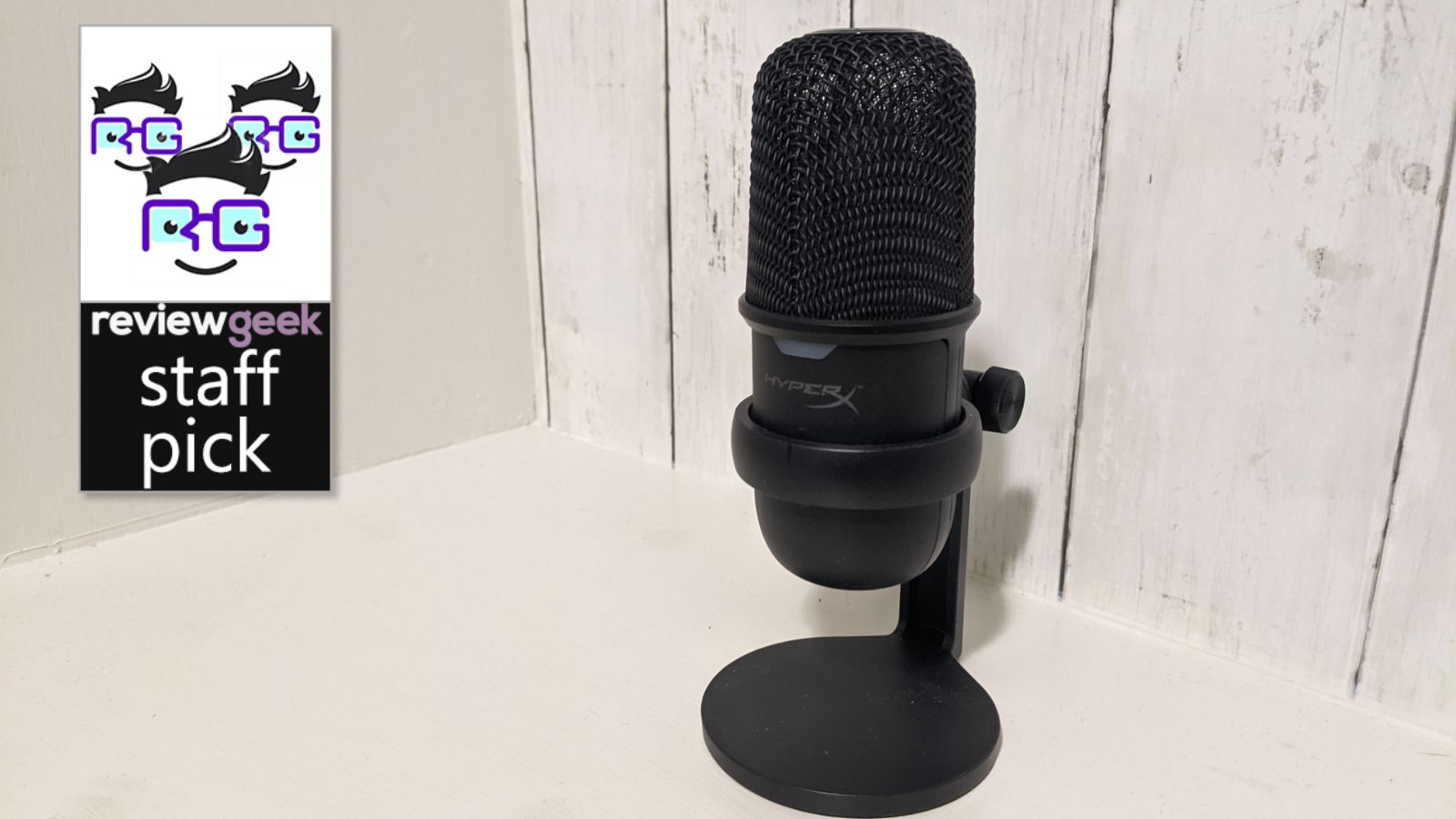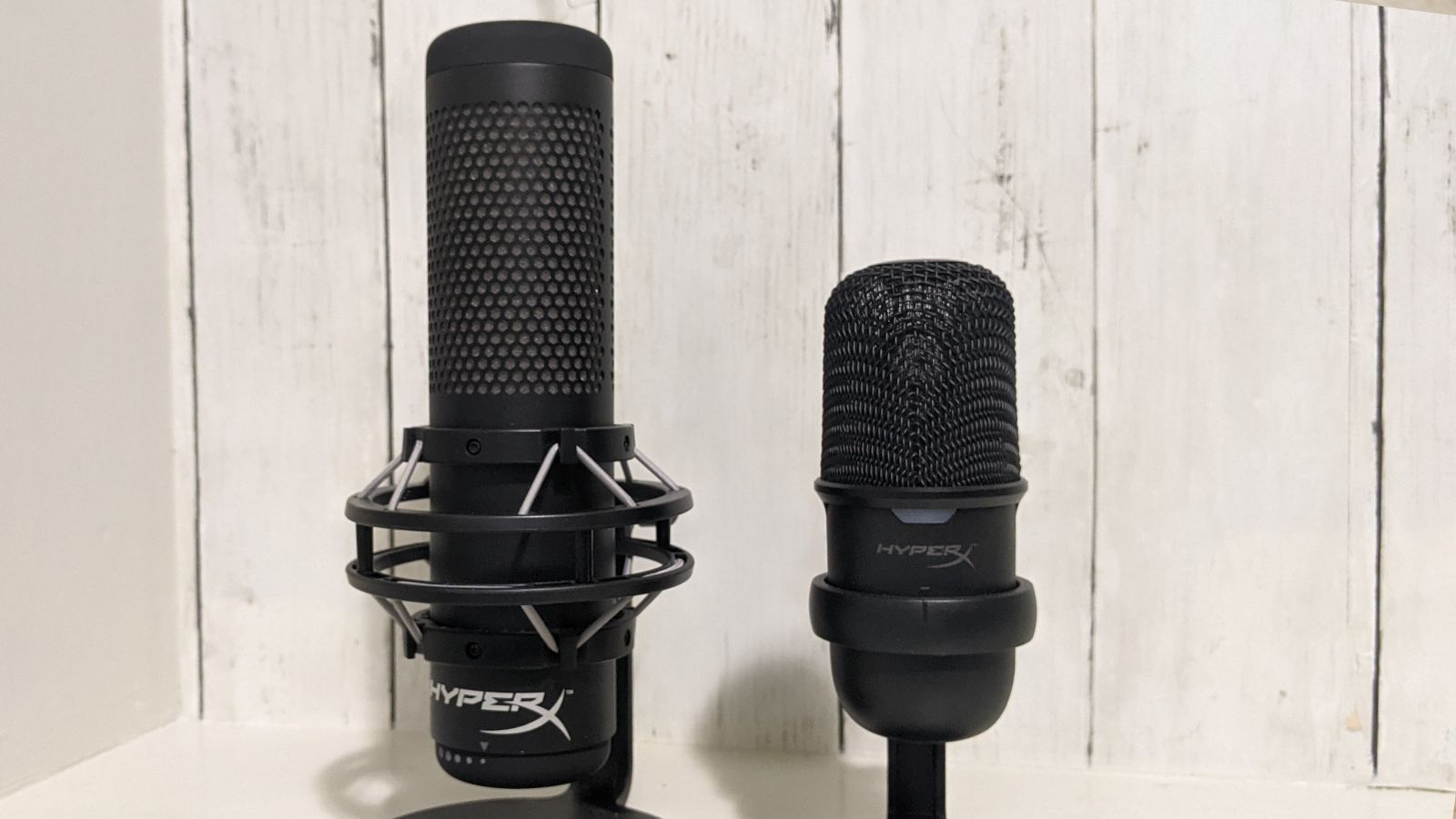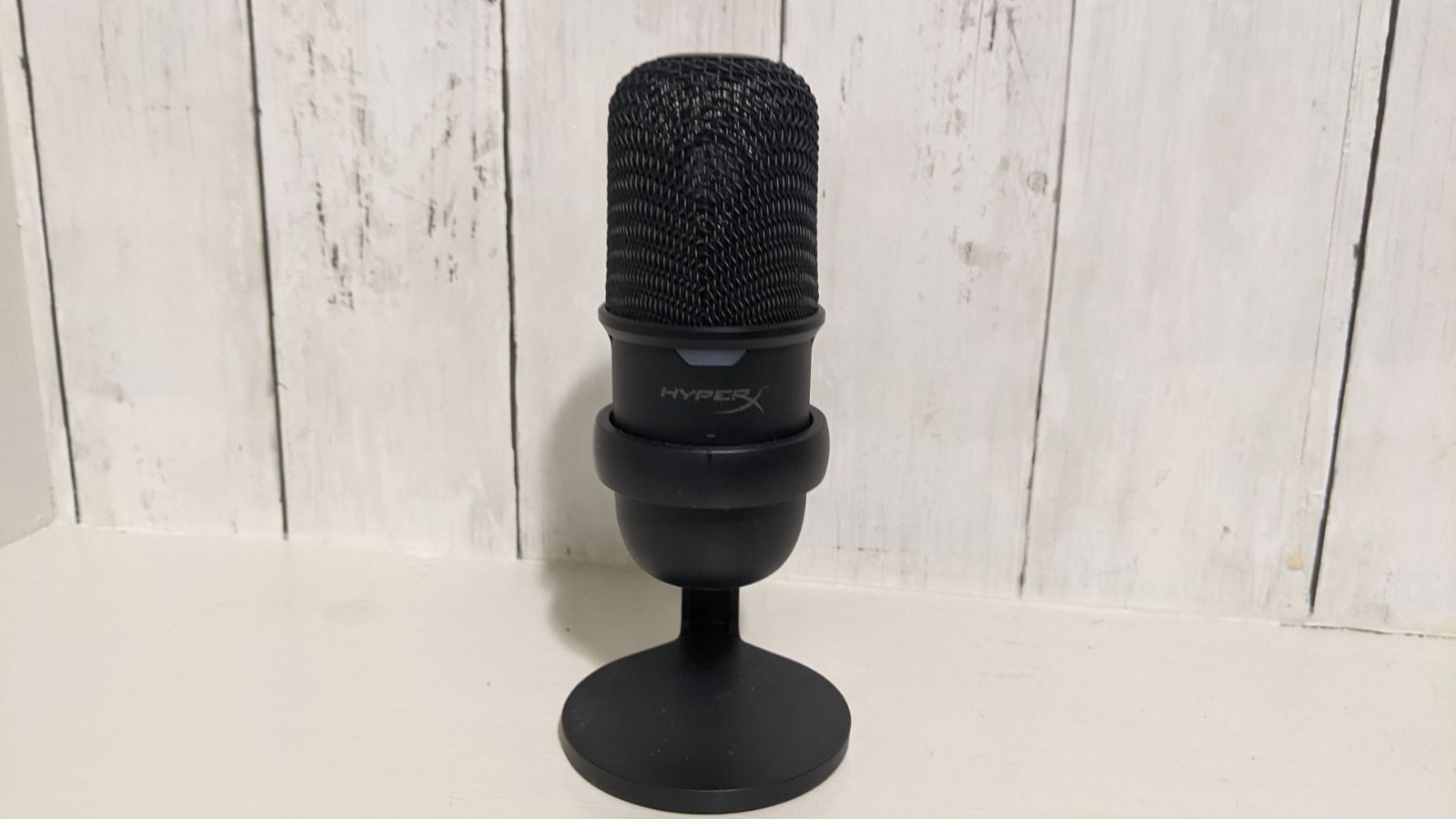Quick Links
HyperX has released a couple of microphones over the years, both squarely aimed at gamers. The smaller, more affordable SoloCast may not seem like much at first glance, but in the world of tiny microphones, it's doing everything it needs to.
These compact microphones, for lack of a better term, have been growing increasingly popular over the years---or at least, I assume they have because they keep getting released. They're targeted at gamers and streamers most of the time, but I rarely see them being used in either context. I've never fully bought into the advantages of these smaller microphones, besides maybe being easier to store.
That said, the SoloCast looks a lot better, as it only costs $59.99---a pretty good price for a microphone from a brand like HyperX. Similar options like the Blue Yeti Nano are quite a bit more expensive, so it's nice that one of these compact microphones takes advantage of their smaller stature to lower the price.
Will that be enough to make this microphone worth purchasing? It's less expensive than most but that can easily be done by making crucial parts of the microphone feel cheaper as well. So let's see how HyperX got the price down, and whether the sacrifices were worth it.
Efficient Casing
The SoloCast measures at barely five inches tall, so there's not a lot of hardware to discuss, but what is here is still solid. The body of the mic is made out of black matte plastic with the only breaks being a subdued HyperX logo and a bright red LED. The latter's your mute mic indicator and a rather aggressive one at that. When the mic is unmuted it stays solid red, but when it is muted it starts flashing red. There's no way to disable the light so if you're not a fan of LEDs on mics this may be enough to consider other options right off the bat.
If you don't mind the light, then it does its job and nothing more. There are no options to customize it in any way---in fact, you can't customize this microphone at all. There's no RGB, only one polar pattern (Cardioid to be precise, which is best for into the front of the mic), and unlike the mic's bigger brother, the QuadCast, there's no software to fine-tune it. HyperX NGENUITY, which is used for most of HyperX's products, refuses to even acknowledge the SoloCast's existence.
Basically, what you see is what you get---the only thing I haven't mentioned is the mute-mic button on the top of the grill. This isn't a standard button mind you, it's the same sort of softer touchpad that's featured on the QuadCast. It makes it so you can just brush your finger against the button to trigger it, but I think the feature wasn't as well-implemented here as the QuadCast. Likely due to the size limitations, the mute button on the SoloCast is a lot more finicky and it was difficult to find the sweet spot of triggering the button and not causing feedback by tapping the mic too hard. You get used to it after using the microphone for a while, but expect to have some issues muting for the first couple of weeks.
For the size, it's a well-designed microphone, if a bit run-of-the-mill. The one feature it does tout is the easy-to-access mute button and everything else just blends into this pill-shaped void of black and grey---which makes the choice of a big bright red LED even stranger to me. But I digress.
There are no real downsides to owning a compact mic like this from a hardware perspective; in fact, there are some direct advantages to this size. If you have the mic in front of you it's less in the way, and it's easier to store when not in use. However, this isn't where the trade-off lies for the SoloCast---that's almost exclusively found in the sound department.
Decent Audio for a Bite-Sized Mic
Compact microphones are at an inherent disadvantage when it comes to audio quality. While the inner tech is still important to consider, there's a reason why most microphones are the size they are---put simply, the larger bodies allow for better tech to capture more sound in higher quality. Despite this, the SoloCast still does a commendable job for the money.
Without any manufacturer software, you'll be stuck with how the mic sounds out of the box. The SoloCast has a sort of hollow yet loud sound to it that, while not great, is definitely serviceable. You wouldn't want it for accurately capturing your voice, but for voice calls or in-game comms, this is more than enough. I've heard better from other compact microphones, but you're getting mid-range sound for a mid-range price here.
A Solid Microphone for a Reasonable Price
The SoloCast pretty much achieves what it sets out to do. It's a compact microphone that delivers hardware and audio quality befitting of the price and not much else. Minor issues like the somewhat finicky mute button are pretty easy to ignore here, and this is a great affordable alternative to more expensive compact microphones.
My only real issue would be the lack of any software support. Being able to adjust the gain would've been an extremely useful feature, alongside maybe some options for the LED. Even then, the SoloCast out of the box is still a great microphone, and the lack of software does make it a more straightforward product in a way--- there are no installations to worry about, just plug it in and get started.
I'm still not entirely convinced of the practicality of these compact microphones in general, but the SoloCast is probably the best advocate for them I've seen. By costing significantly less than most popular USB microphones, the SoloCast creates a comfortable niche for itself in the midrange bracket. If you're looking for a mic of this stature in this price range, there's hardly a better option. And even if you're like me and don't fully understand the advantages of smaller mics for everyday use, it's still a solid choice when compared to similarly priced full-sized mics.

HyperX SoloCast
- Compact build
- Decent Audio
- Convenient muting
- No software
- No options for adjusting audio




